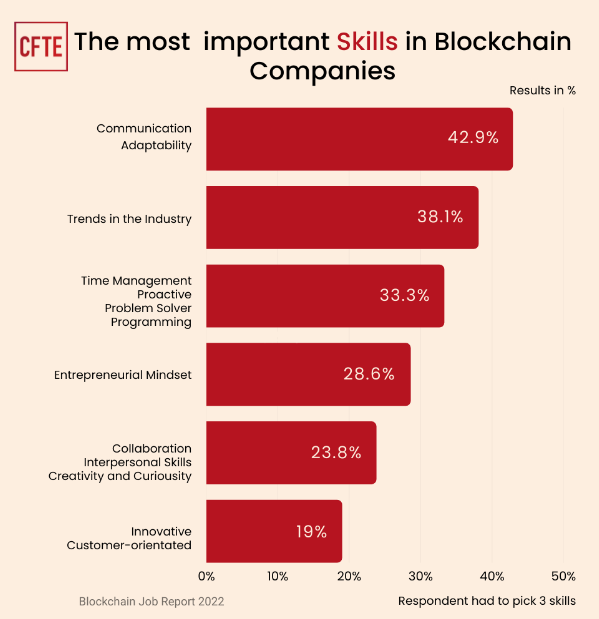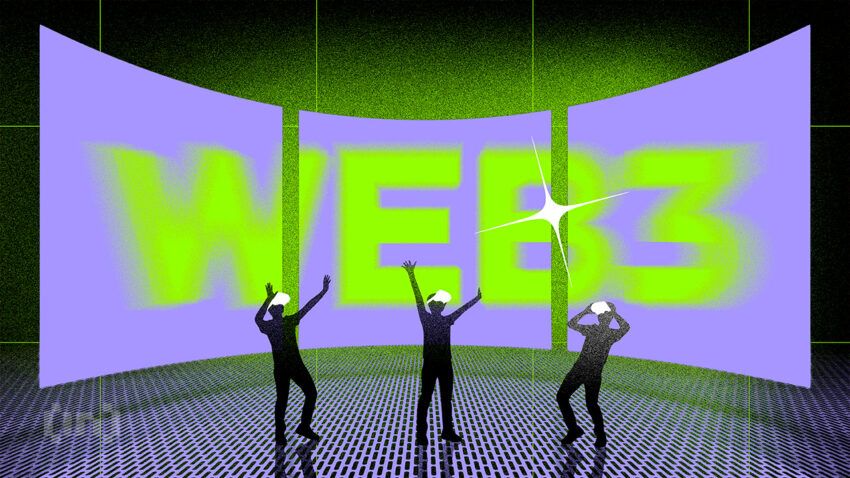The rise of web3 has been nothing short of a digital revolution. Although still in its early stages of development, web3 is already impacting established industries and laying the groundwork for entirely new ones. While currently in its infancy, the web3 job market will likely exhibit explosive growth in the coming years, potentially outpacing many industries. If you have web3 role aspirations but feel jittery about potential interview curveballs, take a deep breath — we’ve got your back. This guide explores some of the most commonly asked web3 interview questions and some short, to-the-point model answers.
In this guide:
Most commonly asked web3 interview questions
As web3 continues to evolve, organizations — both small and large — are increasingly turning to decentralized mechanisms to foster customer loyalty and enhance user privacy. This is, in turn, fueling a surging demand for individuals knowledgeable in web3 and blockchain technologies.

If you are keen on tapping in on the opportunities web3 brings, start by familiarizing yourself with the core concepts. Keep your finger on the pulse of emerging trends. Use the following web3 interview questions (and answers) as a starting reference point.
“Web3 is the next stage of the Internet’s development, where the web becomes truly intelligent, and the ability to process data and learn from it becomes the norm.”
– Andrew Kelleher, CEO of Cogniac, posted on X.
Find your dream job
Q1: What is web3, and how does it differ from web2?
Answer: Web3 refers to the next evolution of the internet that is built on blockchain technology. It fundamentally differs from the centralized systems that dominated the preceding phase of the internet’s evolution, i.e., web2. In web3, there are no large intermediary entities that control networks, data, or applications. Instead, control and ownership are distributed among users through the underlying cryptographic and consensus mechanisms of blockchains.
One benefit of web3 is that its decentralized approach solves many of the problems associated with centralization. These may include the lack of transparency, privacy issues, monopolization, and single points of failure. By removing centralized intermediaries, web3 puts the power back in the hands of users. For instance, applications can be built in a permissionless way, giving users more freedom over what they create, own, and monetize.
Additionally, web3 introduces new models of digital ownership through non-fungible tokens and decentralized autonomous organizations. These concepts were not possible in the previous centralized iterations of the web. Overall, web3 represents the next phase of an open, decentralized internet that empowers users in exciting new ways not seen before.
Q2: Can you explain the concept of a smart contract in the context of web3?
Answer: Smart contracts are a critical component of the web3 technology stack. Put simply, they serve as autonomous programs that reside on blockchains and execute based on predefined conditions.
They allow for complex digital agreements and workflows to be encoded directly into the technology instead of relying on traditional legal contracts or third-party intermediaries.
When specific conditions programmed into a smart contract are triggered, the corresponding actions execute automatically per the agreed-upon logic. There is no need for outside intervention. This self-executing nature eliminates counterparty risk and enables seamless peer-to-peer transactions globally.
Decentralized applications across finance, supply chain, gaming, and more are increasingly built using smart contract programming as the foundation. They introduce accountability and remove centralized points of control, which aligns with web3’s emphasis on transparency, security, and user ownership.
Q3: What are decentralized autonomous organizations (DAOs), and why are they important in web3?
Answer: DAOs represent a novel form of organizational structure within web3. They are characterized by decentralized governance. These organizations operate based on rules established in smart contracts, with decisions made collectively by their members. DAOs play a significant role in web3 by promoting democratic governance and transparent operations. They facilitate collaborative decision-making and resource management, reflecting the ethos of decentralization and community-driven development within the web3 ecosystem.
Q4: How does web3 enhance user privacy compared to previous web iterations?
Answer: Web3 enhances user privacy through the power of decentralization facilitated by blockchain technology. Unlike web2, where user data storage depends on centralized servers, web3 allows users to maintain control over their data. Blockchain’s cryptographic features ensure secure, pseudonymous interactions, which reduces the risk of data breaches and unauthorized access. Additionally, decentralized applications allow self-sovereign access without revealing personal details to app builders. Users connect securely on their terms, disclosing only what is necessary for core functionality. These factors combine to make web3 inherently more privacy-friendly than web2.
Q5: How do consensus mechanisms in blockchain technology work, and why are they crucial in web3?
Answer: Consensus mechanisms are protocols that ensure all nodes in a blockchain network agree on the validity of transactions. They are necessary for maintaining the integrity and security of the network. These mechanisms resolve conflicts and prevent fraudulent activities without needing a central authority.
In web3, popular consensus mechanisms like proof-of-work (PoW) and proof-of-stake (PoS) play a critical role. PoW requires computational work to validate transactions and mine new blocks, while PoS involves validators staking their cryptocurrency to validate transactions. These mechanisms are vital for achieving decentralized, transparent, and tamper-proof record-keeping, which is foundational to web3’s trustless environment.
Q6: What are the key differences between centralized and decentralized applications, and how do these differences impact user experience in web3?
Answer: A key contrast between web2 and web3 is the architecture behind applications. Centralized applications (DApps) operate via servers controlled by a single entity, while decentralized applications (DApps) run on distributed peer-to-peer networks with no central control point.
This distinction carries major implications. DApps concentrate power and data into centralized repositories, which makes them vulnerable to downtime, censorship, exploitation, and other failures stemming from that central entity. In contrast, DApps avoid these pitfalls by virtue of their decentralized nature. They disperse control to enhance transparency, security, and reliability.
For end users, decentralized architectures fundamentally reshape assumptions in web3. DApp users retain ownership over personal data instead of surrendering it to publishers and advertisers. Uptime and availability gain resilience without centralized points of failure. However, decentralized architectures can also lead to challenges like varying user interfaces and slower transaction speeds.
From job vacancies to career advice, the BE[IN]CRYPTO HR Team is here to guide your journey
Q7: Explain the role of token standards like ERC-20 and ERC-721 in web3.
Answer: Token standards such as ERC-20 and ERC-721 are essential in web3 for creating interoperable and standardized tokens on the Ethereum blockchain. ERC-20 is a standard for fungible tokens, which means each token is identical and interchangeable. It is commonly used for creating utility tokens.
ERC-721, on the other hand, defines a standard for non-fungible tokens (NFTs), where each token is unique and not interchangeable. These standards ensure consistency and compatibility across different applications and platforms in web3. They allow developers to create tokens that can easily interact with various wallets, exchanges, and smart contracts. This, in turn, facilitates a cohesive and efficient ecosystem.
Q8: How does sharding improve scalability in blockchain networks like Ethereum 2.0?
Answer: Sharding is a scalability solution that divides a blockchain network into smaller, more manageable pieces or ‘shards.’ Each shard processes a portion of the network’s transactions, allowing parallel processing and significantly increasing the network’s capacity. Ethereum is adopting this approach with its Ethereum 2.0 upgrade, which utilizes shard chains. This new approach will enable Ethereum 2.0 to process more total transactions per second by assigning transactions and state storage across 64 new shards. At the same time, it will maintain the decentralization and security of a single chain.
Q9: What is a layer-2 scaling solution, and how does it benefit web3 applications?
Answer: Layer-2 scaling solutions are protocols built on top of an existing blockchain (layer-1) to improve transaction speed and reduce costs without compromising the underlying blockchain’s security.
These “secondary” protocols handle batches of transactions, processing them quickly and cheaply while still guaranteeing the security of the underlying blockchain. They only write final settlement states to the base chain periodically.
This offloads volume, allowing higher transaction rates, lower fees, and faster confirmation times. Meanwhile, the underlying blockchain remains unchanged. This approach enhances web3 usability for end users by facilitating cheap, fast payments and seamless application experiences closer to web2 standards.
There are various layer-2 formulations, including generalized approaches optimized for specific use cases. Sidechains like Polygon and Optimism run parallel to mainchains. Meanwhile, rollups like Arbitrum “roll up” transaction batches to settle on the chain.
Q10: Explain the concept of InterPlanetary File System (IPFS) and its significance in web3.
Answer: IPFS is a decentralized file storage system that aims to replace the traditional HTTP protocol for a more distributed web.
A foundational component of web3 is decentralized data storage and distribution. This eliminates centralized points of failure and censorship while better aligning incentives around maintaining and securing networks.
IPFS provides exactly this — a peer-to-peer hypermedia protocol that replaces traditional HTTP client-server models. It stitches together a distributed web of node operators who store and deliver content in a decentralized manner. IPFS is particularly important for DApps and NFTs, as it enables the decentralized storage of large files, such as images or videos.
Get ready to shine
These are just a glimpse of the common web3 interview questions you might face, though expect variations. Gear up by starting with the fundamentals and gradually progressing to the technical nitty-gritty. Remember, the web3 job market presents many exciting opportunities for both tech and non-tech professionals. With the right preparations, dream roles are there for the taking. Good luck!
Frequently asked questions
What skills are essential for a web3 job?
How can I prepare for a web3 job interview?
What types of roles are available in web3 companies?
Disclaimer
In line with the Trust Project guidelines, the educational content on this website is offered in good faith and for general information purposes only. BeInCrypto prioritizes providing high-quality information, taking the time to research and create informative content for readers. While partners may reward the company with commissions for placements in articles, these commissions do not influence the unbiased, honest, and helpful content creation process. Any action taken by the reader based on this information is strictly at their own risk. Please note that our Terms and Conditions, Privacy Policy, and Disclaimers have been updated.




